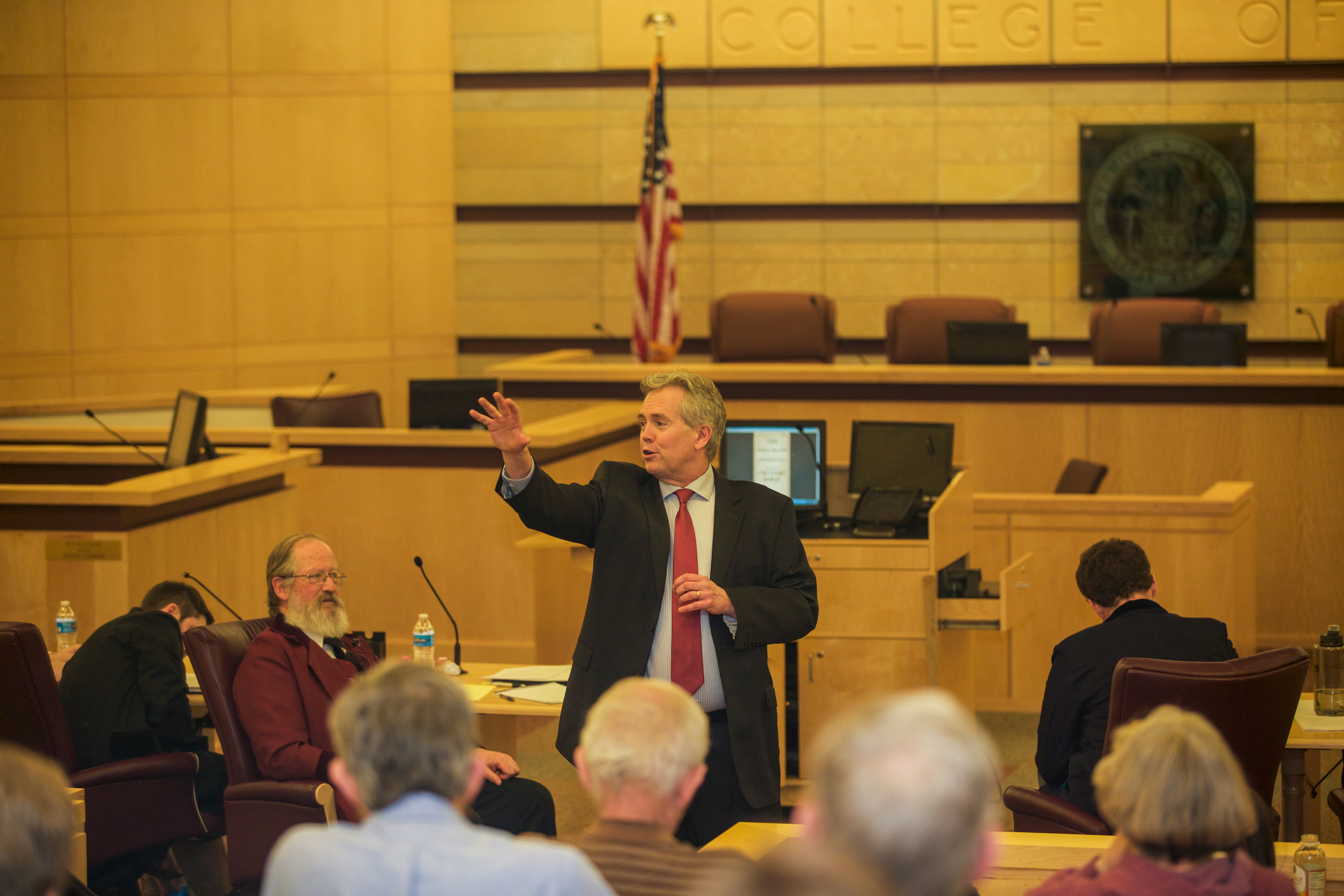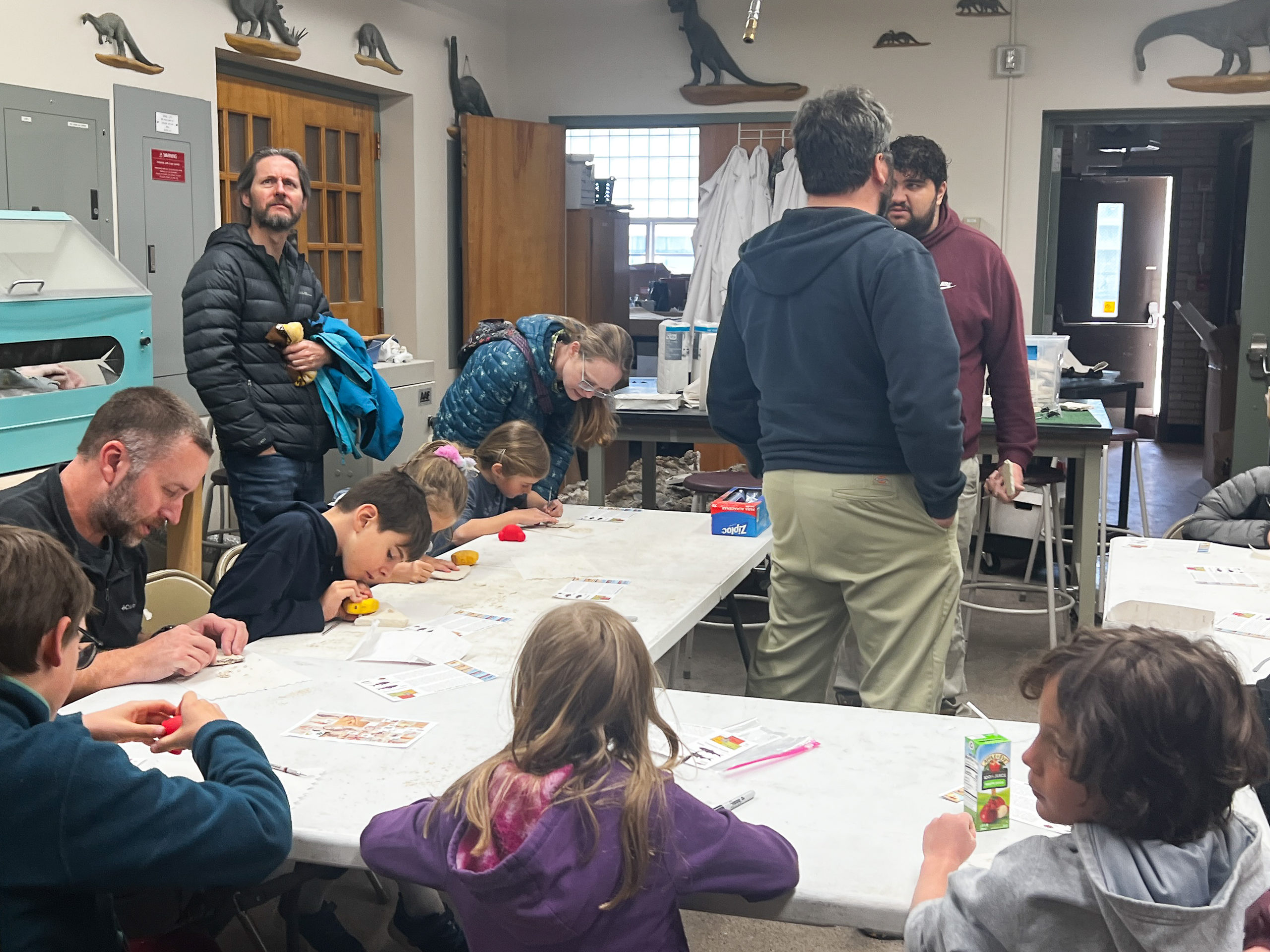Students gathered in the College of Law’s large moot courtroom Monday night to reenact a trial, partnering with the Spence Law Firm Historic Trial, of the Rock Springs Massacre.
“The Rock Springs Massacre is the saddest event in our state’s history, which means we should learn from it so we can avoid repeating it,” said Steve Easton, professor of law and faculty trial director, in a release.
By September of 1885, about 600 Chinese workers had immigrated to Rock Springs, Wyoming, to work in the Union Pacific coal mines, according to WyoHistory.org. White miners and railroad workers continuously striked against the Union Pacific because of low wages. Because the Chinese workers were willing to work with these low wages, the wages never changed.
The Union Pacific responded to these strikes by hiring more Chinese workers than white workers so it could spend as little money as possible to keep workers. There were about twice as many Chinese as white workers.
The day of the massacre 100 to 150 white workers, including women, gathered to form a mob and killed 28 to 52 Chinese workers. They also harmed many others in Rock Springs’ Chinatown. After running the workers out, they looted and burned Chinese workers’ homes while some of the families still trapped inside.
News of the massacre spread like wildfire throughout the state and nation, and many counties that had Chinese workers feared similar fates. Sheriff J. J. LeCain of Uinta County telegraphed to the Territorial Governor Francis E. Warren quickly after hearing the news.
“A large number of citizens, with myself, are satisfied the outrages committed at Rock Springs will be repeated here, and are liable to break out at anytime,” read a the telegraph reported in the Las Vegas Daily Gazette, Sept. 4, 1885. “We need troops to protect the lives and property of our citizens.”
While the College of Law’s three-hour reenactment trial followed the historic event as closely as possible, there were some changes due to the fact that there was not an actual trial for the massacre. Participants also used modern law instead of historic law.
The Honorable Catherine Rogers, one of the four district judges in Laramie County, granted her presence to help with the case. Two attorneys also came to assist, Mel Orchard from the Spence Law Firm in Jackson, Wyoming, and George E. Powers from Cheyenne, Wyoming.
On the plaintiff’s side was Mrs. Ming Lee, whose husband Ah Lee had been killed in the massacre, played by Qun Ren, a part-time research scientist for the Department of Zoology and Physiology. On the defendant’s side was James Evans, who was the mine supervisor at the time of the massacre, played by UW student Sam Laffey.
Three witnesses were appointed to each side, the plaintiff and defendant, to argue whether the cause of the massacre was the Union Pacific’s fault or the white workers.’ A jury was formed with participants from the crowd.
“Power, prejudice and profit,” intoned both attorneys, Orchard and student John Paul Fritz, to begin the opening and closing arguments for the Plaintiff’s side in an effort to place significant blame on the Union Pacific and to show the company only cared about money and power.
The defendant’s attorney Powers began his closing argument with a “The Chinese must go!” poster that was plastered throughout the town by the white workers, in an effort to place blame on other subjects.
After hearing all sides of the argument, the jury deliberated in the jury room and came to the conclusion:
- Ah Lee had 5% of the blame for shooting a gun during the massacre in the effort of scaring the perpetrators away and protecting his wife.
- Union Pacific Railroad had 20% of the blame for stirring the pot by only hiring Chinese workers after continuous strikes from the white workers.
- Others who were involved in the massacre had 75% of the blame for starting the massacre and killing Mrs. Lee’s husband.
- Ming Lee also received a settlement of $1.5 million for her suffering.
The Spence Law Firm Historic Trial also was held in the Western Wyoming Community College with an entire new cast and jury had similar outcomes with Ah Lee getting 0% blame, Union Pacific with 40% blame and others with 60% blame. The settlement they chose was approximately $4 million.
The College of Law usually has one mock trial associated with the Spence Law Firm every school year. The trial is open to the public so students may attend the next one in the following year as a student or as a community member.
The Photos were taken by catsmeowphoto


















